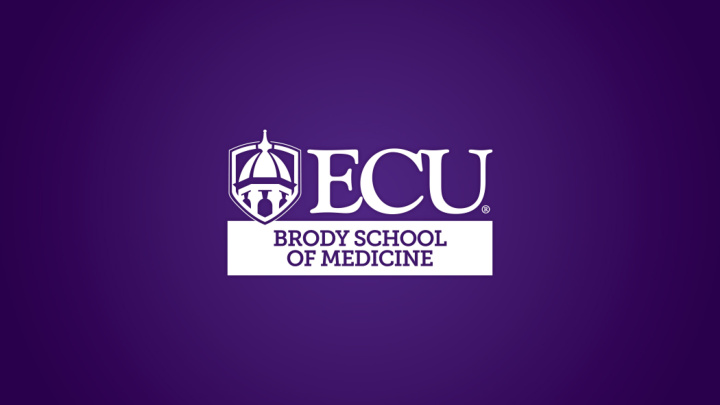



BSOM Connection Initiative: Medical Student Well Check Calls Introductory TRAINING
A collaborative Academic Affairs project organized by: Office of Student Affairs (OSA) Office of Data Analysis & Strategy (ODAS) Office of Student Development & Academic Counseling (OSDAC)
Training Objectives Understand Differentiate the Implement use various of the Call Log and apply categories of Form to elements of medical student document calls active listening concerns and and refer matching students with responses serious concerns
Call Script – the start of Active Listening Hello. I am ________________. The purpose of this call/video chat is to check-in with you to see how you’re doing and to make sure that you’re supported during this virtual instruction period at Brody. How are you doing with managing your academic/curriculum responsibilities? How are you doing on a personal level? What other concerns do you have and how can Brody assist you with them? Thank you for speaking with me today. I will check in with you again on ____.
Active Listening Elements L A F F • Listen, • Ask basic • Focus on • Find a empathize questions the resource, , concerns if needed communic ate support McNaughton, D., Hamlin, D., McCarthy, J., Head-Reeves, D., & Schreiner, M. (2008). Learning to listen: Teaching an active listening strategy to preservice education professionals. Topics in Early Childhood Special Education , 27 (4), 223-231.
Listen, empathize, communicate support • Begin with a warm greeting • Use minimal verbal encouragers as you listen… speak less where possible • “Oh.” “I see.” “Tell me more.” “That’s good.” • Communicate support/interest but be careful with agreeing/disagreeing with some content
Ask basic questions… to gather information Open Closed • How’s studying coming • Are you in Greenville now? along? • Do you video chat with your • How are you doing? peers to stay connected? • What other questions do • Have you talked with anyone you have? about that?
Focus on any concerns that you hear Summarize & check for accuracy Example: “I’d like to review what we’ve talked about…… is this correct?”
Find a resource (if needed) & follow-up Category 1: Category 2: Category 4: Category 3: General concerns Significant concerns No contact made No concerns • Could not reach • Contact made but • Contact made & • Contact made & student – no no concerns general concerns significant contact made; will identified identified concerns identified follow-up • Arrange • Refer to resource • Refer to resource follow-up call list & remind list & remind student about student about resources resources • Arrange • Let student know follow-up call you will refer their situation to OSDAC • Arrange follow-up call
Category 3: Sample of General concerns 1. Challenges with coursework/studying or student responsibilities, but with a sense of determination or confidence (i.e. struggling to keep up with coursework, virtual learning concerns, test/exam prep) “ It’s hard some days to stay focused on studying. On the hard days, I’ve found that it’s best for me to aim for less study time and more me time.” 2. Transition concerns related to COVID19 (i.e., time spent at home or with family, Brody isolation, general pandemic-related uncertainty) – but student is managing appropriately “ Right now, I have family members with COVID symptoms who are waiting on COVID test results. Even though I’m scared, my faith is helping me to stay strong and I know we’ll somehow get through this.” 3. Informational support “ I’m not sure if my Brody financial aid will be disrupted by all that’s going on right now.”
Category 4: Sample of Significant concerns 1. Challenges with coursework/studying or student responsibilities, but with a sense of hopelessness or distress. “It is absolutely nuts to act like we’re all able to still put in 12 hour days, participate in these webinars and perform at the same level as before. Some of my classmates feel like this is easier than before, but to me it’s two or three times as hard.” 2. Transition concerns related to COVID19 – but the student is not coping well. “I’m locked in at home and locked out of Brody and it is taking a toll on me. The uncertainty of each new day or week and the fact that I’m expected to continue moving forward with my normal responsibilities at medical school is just overwhelming.” 3. Student describes being impacted by personal needs/situations that require urgent attention (i.e., lack of food, personal health, financial, family-related: “My financial aid refund has been delayed until July and I don’t have money to buy food, pay bills, or take care of daily needs. This is not just refund money that I need to take care of me but I also need it to take care for my extended family.” 4. The student mentions a concern about another Brody student. “I have a Brody classmate who is having a real hard time right now and needs help.”
Process Student identified as 10 min phone or Category 1, 2, 3 or 4 Workflow video call to student concern – response based on concern OSDAC/OSA* tracks Well Check Form forms & intervenes completed/submitted for Category 4 concerns *OSDAC=Office of Student Development and Academic Counseling OSA=Office of Student Affairs
Call Documentation & Tracking There will be a call contact form to be completed following • each call Completed forms are monitored and addressed by OSDAC and • OSA The contact form has to be completed within 24 hours of the • call to the student – this will enable early intervention for students with serious concerns. An example of the call contact form is available for review on • the next couple of slides
Contact us: If you are interested in learning more about this opportunity and other opportunities in the education program, please contact the Division of Academic Affairs
Recommend
More recommend